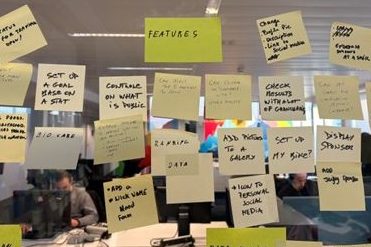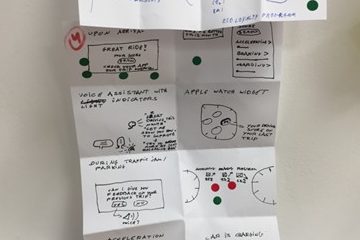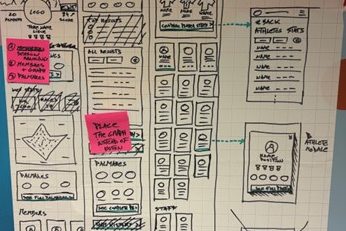In UX/UI design, maintaining creativity while keeping stakeholders aligned can be challenging. Enter the 6’up ideation method and concept mapping – two collaborative tools that, when combined, can transform your design process.
What is 6’up?
6’up is a rapid ideation exercise where designers sketch six different design ideas in six minutes. This time constraint pushes creativity, encouraging teams to think outside the box without overthinking. The quick pace prevents design fatigue by promoting variety and spontaneity.
Concept Mapping: The Visual Funnel
Concept mapping is a visual brainstorming tool that helps organize ideas and illustrate relationships between them. After generating ideas with 6’up, concept mapping allows teams to evaluate, group, and refine these ideas, creating a clear path forward.
The Power of Combining 6’up and Concept Mapping
Together, these methods act as a funnel. 6’up broadens the creative horizon, while concept mapping narrows it down to the best, most viable solutions. This approach not only keeps designers energized but also ensures that stakeholders are aligned at every step.
Benefits of Using 6’up and Concept Mapping:
- Fight Design Fatigue: Rapid ideation keeps creativity flowing.
- Encourage Collaboration: Teams work together in a structured yet flexible environment.
- Align Stakeholders: The funnel method ensures everyone is on the same page from ideation to execution.
- Boost Innovation: The combination encourages fresh perspectives and innovative solutions.
- Streamline Decision-Making: Reduces back-and-forth by clarifying design rationale early on.
How to Implement This Method in Your Design Process:
1. Set the Stage: Gather your team and define the design challenge. List the main content, features, and functionalities that should be present in the design. Doing a benchmark upfront can help.

2. Run a 6’up Session: Each designer sketches six ideas in six minutes, with one minute per design.

3. Create a Concept Map: Create now individually one sketch that incorporates all of the best ideas you gathered from your six up. You have 20 minutes to do so, ensuring it is detailed and self-explanatory.

4. Put Sketches on the Wall: The facilitator pitches each sketch to the group for initial feedback on understandability and user-friendliness. The group provides feedback with green (positive) and red (negative) post-its.
5. Dot Voting: Participants vote on their favorite designs.
6. Refine and Align: One designer consolidates all ideas and feedback into a final sketch that can be wireframed.

7. Iterate and Test: Take selected concepts forward, prototype, and test them with users for feedback.
Real-World Impact:
Many leading design teams use 6’up and concept mapping to solve complex challenges efficiently. By fostering quick idea generation and structured decision-making, they delivered user-centric solutions faster.
By integrating 6’up and concept mapping into your workflow, you can foster a culture of creativity, collaboration, and clarity. Say goodbye to design fatigue and hello to innovative, well-aligned design solutions.
Stay creative, stay collaborative, and keep designing better together!
Interested in getting more practical insights like this piece? Good news, our Product Design community shares them monthly in our Product Design Newsletter, to which you can subscribe here.
Contact us for a consultation and discover how CBTW can help your business optimize conversions through powerful UX and UI designs.